The Lewis Gun: A Forgotten Trench Warrior?
March 9th, 2021
8 minute read
It’s impossible to know for sure if it ever bothered him, but unlike General John Thompson — who is directly associated with his famous “Tommy Gun” — U.S. Army Colonel Isaac Newton Lewis is hardly remembered at all. His gun, however, proved to be the just the thing the military needed during the brutal trench warfare on the Western Front. Yet it was the British Army and not the U.S. Army that made good use of it.
Blame politics.
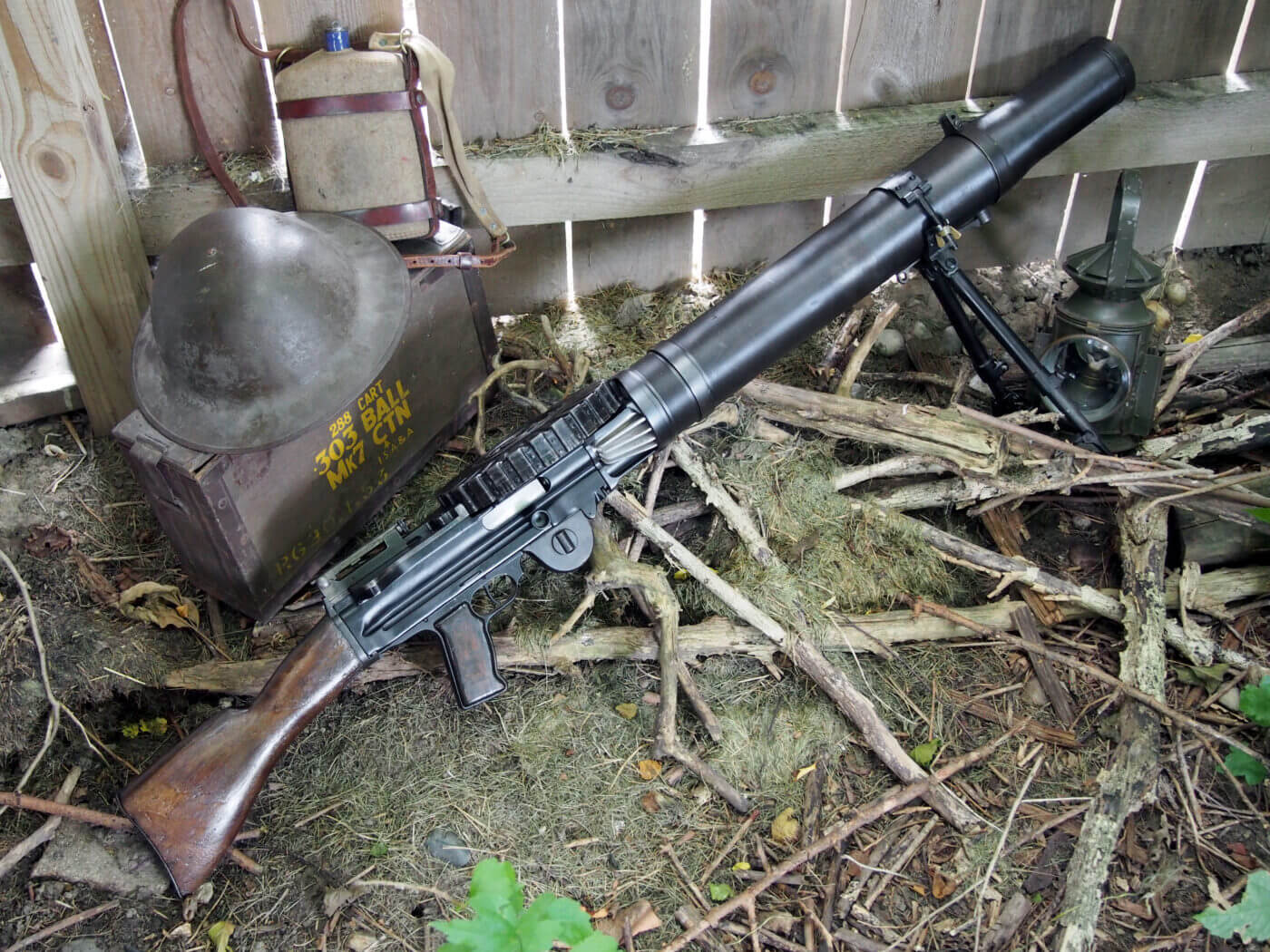
Lewis had serious “differences” with General William Crozier, chief of the Ordnance Department. After being frustrated to the point that he was “slapped by rejections from ignorant hacks,” Colonel Lewis resigned his commission, followed in the footsteps of Hiram Maxim and headed to Europe to persuade military planners to consider his design.
The Belgian Connection
Maxim’s designs were used throughout Europe and adopted by the Germans as the MG08, while the Russians adopted a version of the Maxim machine gun as the MG10. The British-based Vickers Company liked the Maxim design so much they bought the company, refined the machine gun and developed the Vickers Machine Gun.
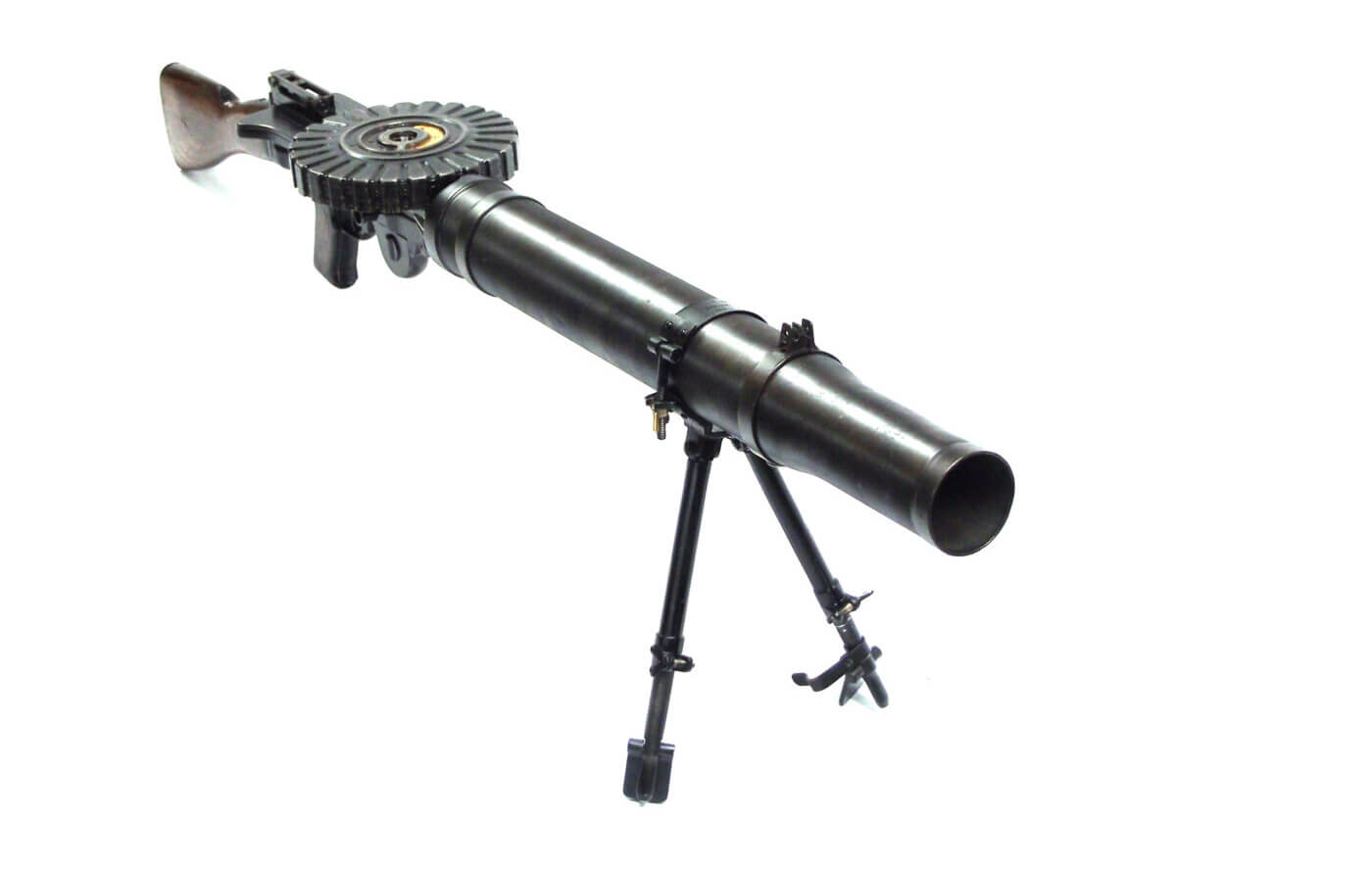
The European militaries, with war on the horizon, saw the potential for machine guns where the U.S. could not — and Lewis worked with the Birmingham Small Arms Company (BSA), the firm known for its motorcycles, to refine some production difficulties. From there Lewis set up ArmesAutomatique Lewis in Belgium to facilitate the commercial production and sales of the weapon — and the Belgian Army was among the earliest customers.
Like gun designers before him, Lewis sold the license to produce the weapon instead of actually producing it himself. As a result he received royalty payments and ended up becoming quite wealthy in the process, thanks in no small part to the outbreak of the war.
When Germany invaded neutral Belgium in the summer of 1914, the Belgian Army became the first military force to field the weapon where it reportedly performed quite well in a defensive role. It should be remembered that at that point the MG08 was largely a defensive weapon only, but clearly the Belgian Army didn’t have enough Lewis Guns (they were issued with about 20) — or really a force large enough — to stop the Army of Imperial Germany.
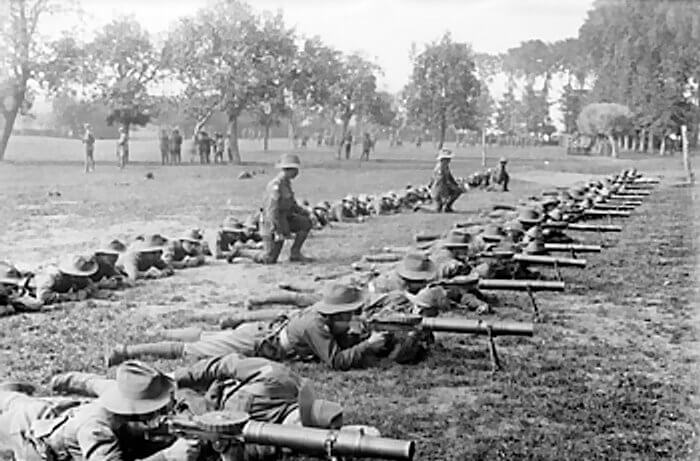
As his adopted country was being overrun, Lewis and his factory moved from Belgium to England and full production of the Lewis Gun in .303 British began at BSA’s facilities under the designation Model 1914. No Lewis Guns were produced in Belgium during the war, and any used by the Germans were likely captured on the battlefield.
A Very Different Design
Compared to the Maxim/Vickers, which were recoil operated and used the energy of recoil to cycle the action, Lewis’ design was gas operated, where a portion of the expanding gas was tapped off from the barrel to drive the piston to the rear and against the spring. Rate of fire was near to 600 rounds per minute and comparable to that of the Maxim.
However, where the Maxim required a crew of three to move the gun, which weighed more than 50 pounds with tripod — not to mention the water can, the Lewis Gun could be operated by a single soldier. It gave mobility that few guns of the era offered.
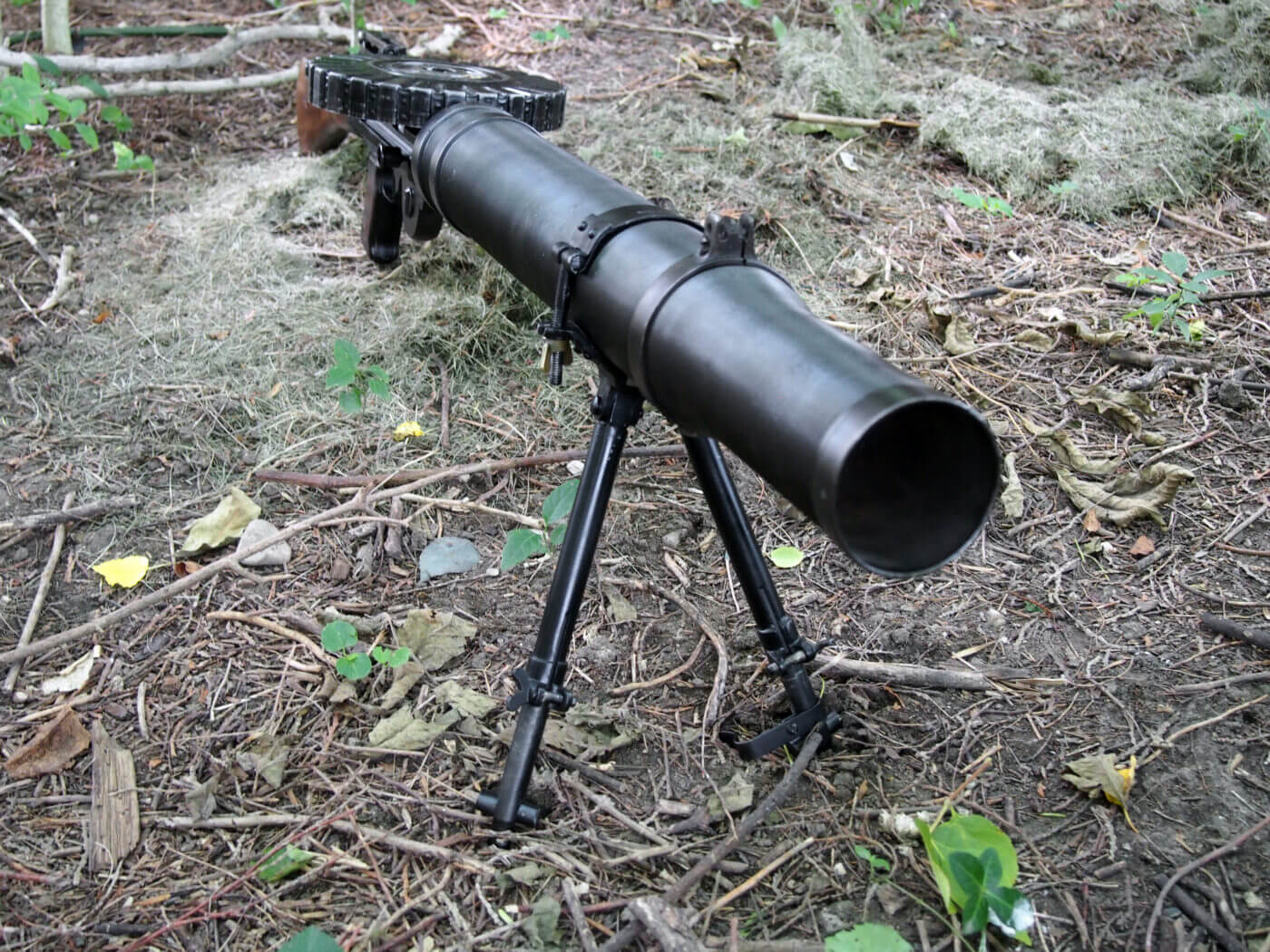
There have been lingering misconceptions about the Lewis Gun, and even today many believe it was water cooled as it featured a large barrel shroud that did resemble the water jackets used on the Maxim/Vickers guns at the time. That is likely the biggest of the misconceptions.
In fact, the shroud held no water. Instead, the shroud’s internals were made of aluminum, which acted in a similar fashion to a heat sink used on the mother board of modern computers. The shroud was actually open at the front and back, and when fired it would pull in air to cool the barrel.
The effectiveness of the shroud has been questioned over the years and guns used without the shroud didn’t heat up any faster than those with it. However, it certainly gave the weapon its iconic look.
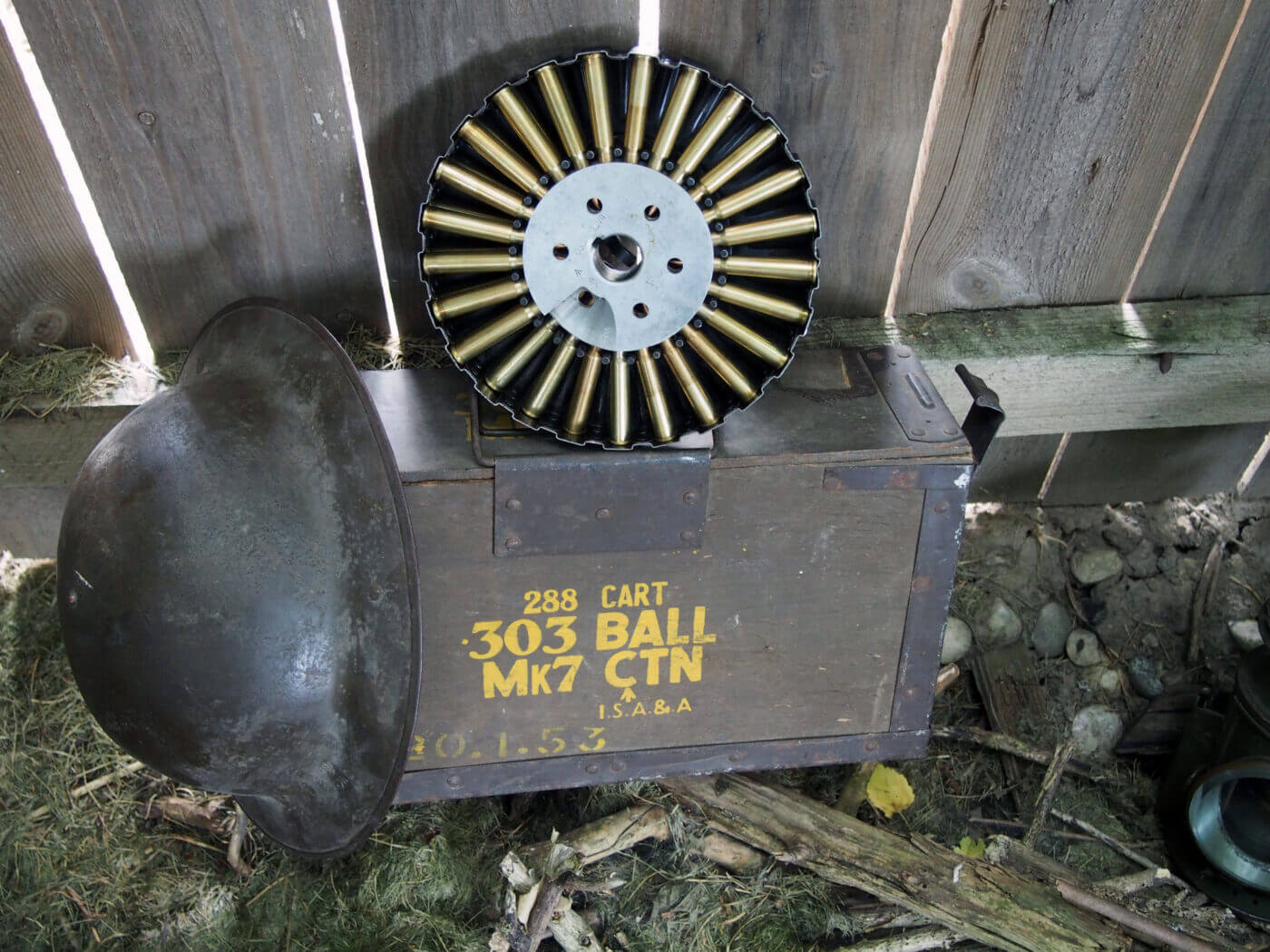
The other notable distinctive feature of the Lewis Gun was its pan-magazine, which was used in place of the more commonly used belts of the era. The standard pan magazine held 47 rounds (a larger one was produced that held 97 rounds) with the bullet-noses facing towards the center. It was unlike drum magazines where the rounds were mechanically indexed and held in place. This design provided space between each round, which proved to be a problem in the trenches as there was no bottom cover on the magazine. Dirt and grime often gathered in the open spaces, causing some jamming issues.
Back to the Colonies
While BSA produced the Lewis Gun throughout the First World War, the American-based Savage Arms Company also produced a version of the weapon. The two guns were similar, but parts weren’t generally interchangeable. One factor was that while the British version was chambered for the .303 ammunition used in the Vickers and Lee Enfield rifles, the Savage version was chambered for the American .30-06 — despite the fact that the American military expressed almost no interest in the machine gun.
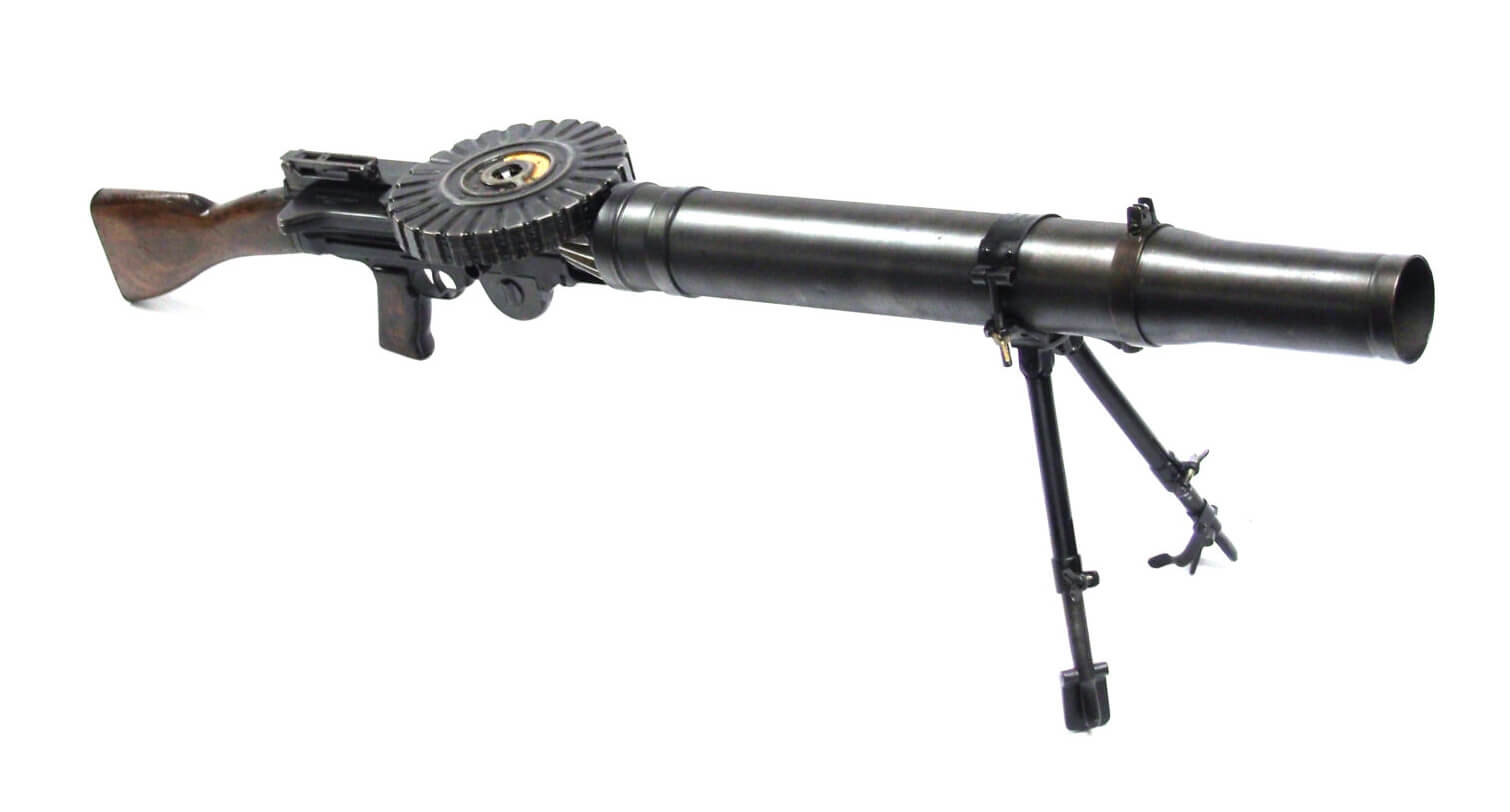
To complicate matters further, Savage produced a version in .303 later in the war that that was exported to Canada, while some 10,000 were ordered by Imperial Russia. The U.S. government had expressed concerns about sending the weapons after the Tsar’s abdication, but the pro-monarchy Whites did receive a few hundred Lewis Guns in 1918-1919, and those were used in the subsequent Russian Civil War. It is unclear whether those were made by BSA or Savage, however.
Despite the fact that Savage produced the Lewis Gun, when the United States finally went “over there,” General Crozier reportedly stepped in and even took the weapon away from the U.S. Marines who arrived in France. That may have been the root of the issue on why the French-made Chauchat has earned such a bad reputation as it was issued over the superior Lewis Gun.
Aircraft Version and WWII
The Lewis Gun provided the mobility badly needed in the trenches during the First World War, and the infantry version was used on all fronts. An aircraft version was also produced, lacking the aforementioned barrel shroud.
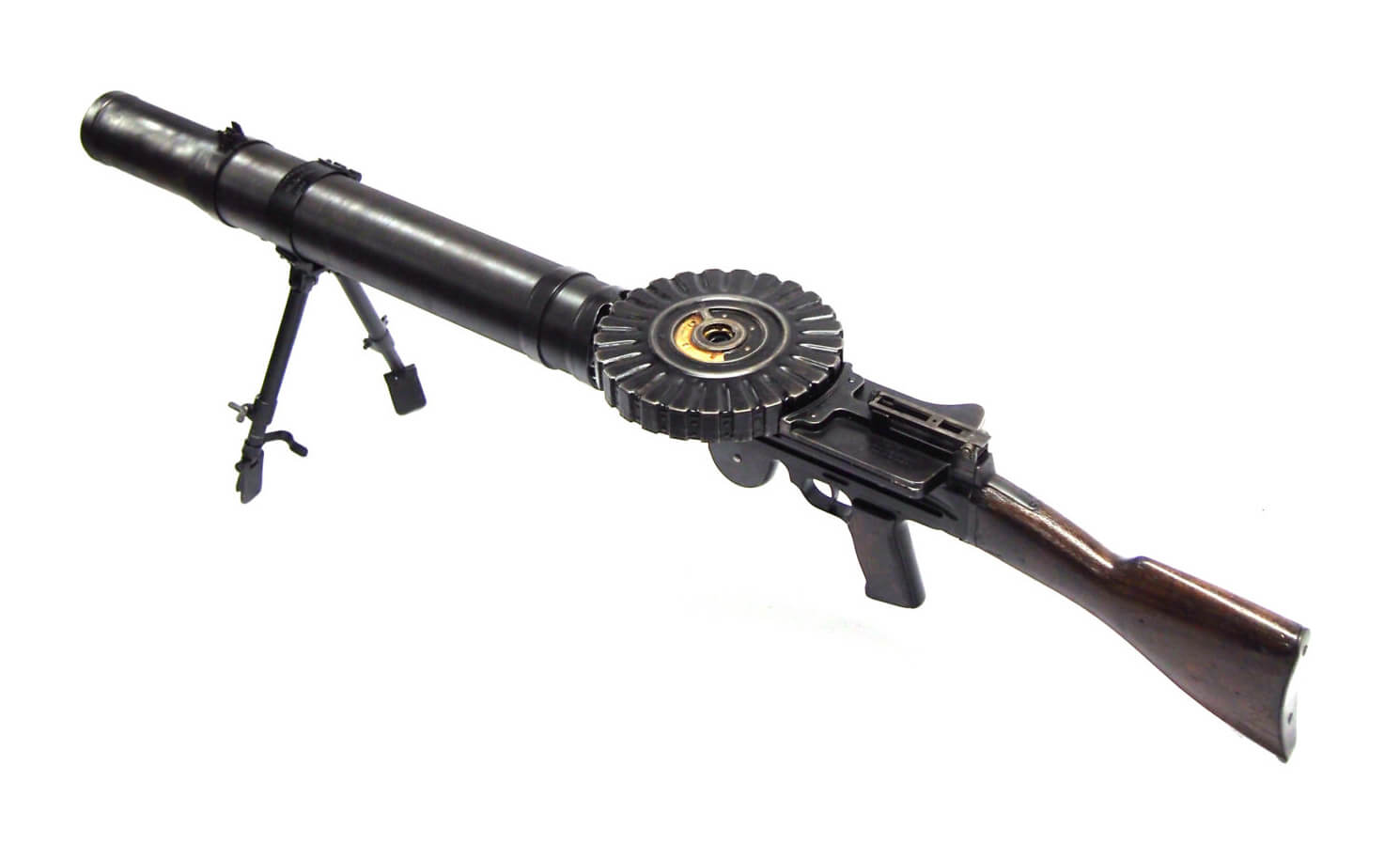
It was far from an ideal solution however, because unlike the Vickers, the Lewis Gun fired from an open bolt and that prevented it from being synchronized with the propeller via an air-craft’s interrupter gear. Instead the Lewis Gun had to be mounted above the propeller. However, the guns proved more effective when used as a defensive weapon on British airships.
Interestingly, while the Lewis Gun has largely been remembered for its use in the First World War, nearly three times as many were produced for use in the Second World War. However, by that point the weapon was largely relegated to a secondary role.
The Lewis Gun in Pop Culture
The Lewis Gun’s first appearance in a movie was likely Hearts of the World, which was directed by D.W. Griffith. That 1918 propaganda film, which was among the first films made about the war and was released six months before the Armistice, truly gave the Lewis Gun its first close-up as well.
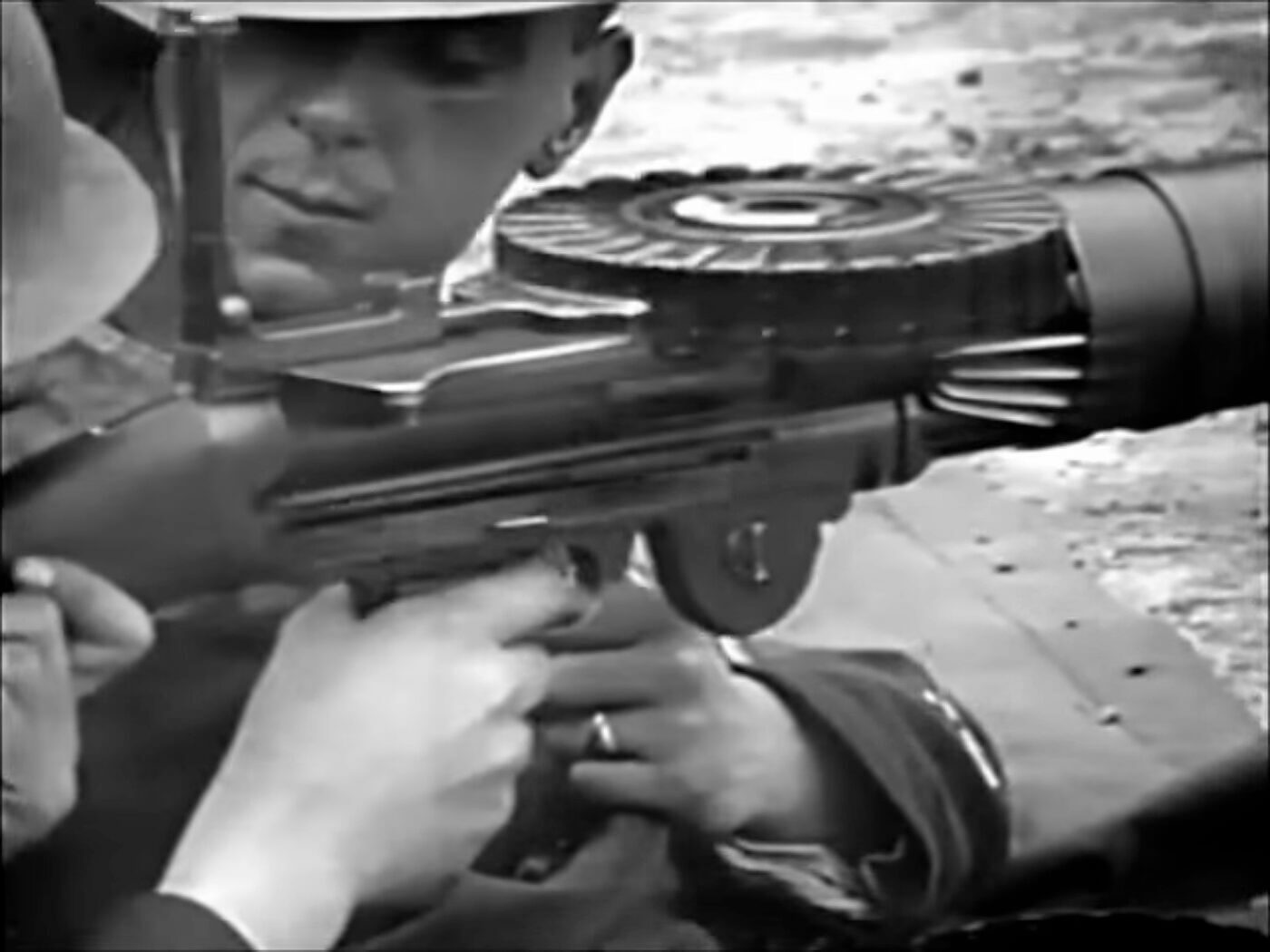
Silent movie actor Charlie Chaplin was arguably the first true “star” to use a Lewis Gun in the 1918 film Shoulder Arms, while such American stars as Henry Fonda, Gary Cooper and Humphrey Bogart could be seen using a Lewis Gun. Steve McQueen, who made everything he touched just a bit cooler, used a Lewis Gun in the 1966 film The Sand Pebbles, while Ian McKellen used it in an anti-aircraft role in the 1995 version of Richard III, which set the Shakespeare play in 1930s England.
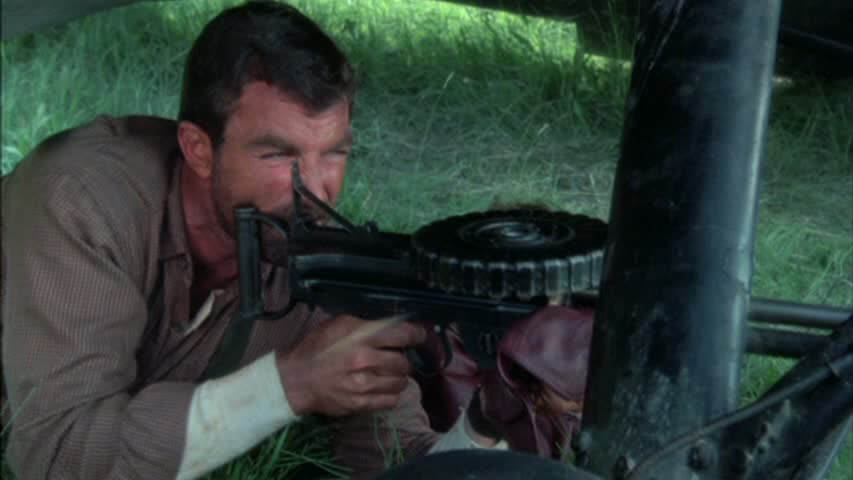
On television, the Lewis Gun could be seen in a couple of episodes of The Young Indiana Jones Chronicles from 1992, while one (likely a static prop) appeared in one episode of the second season (2011) of the period drama Downton Abbey.
A stolen cache of Lewis Guns was also a major plot point in the first season of the British period crime drama Peaky Blinders, but despite being told 20 were stolen only one is seen on screen and it is never fired.
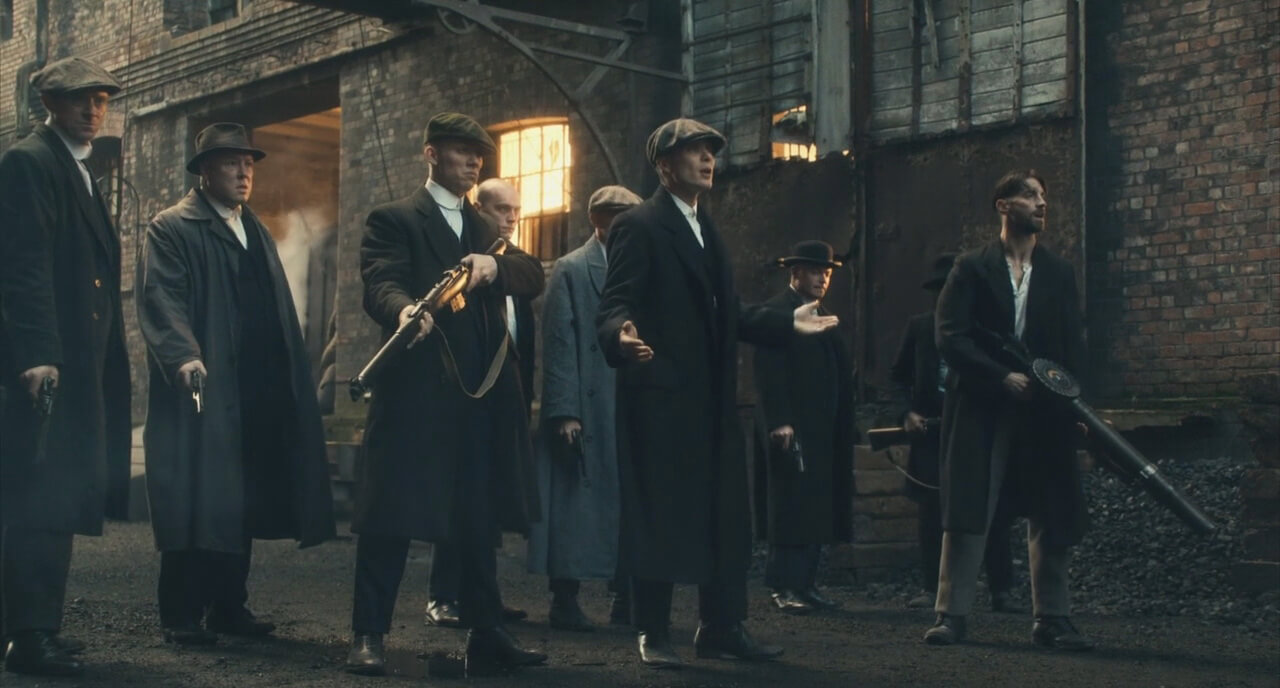
The aircraft version also shows up in numerous films including Wings (1927), Hell’s Angels (1930) and King Kong (1933) to a more recent King Kong (2005). The gun gets a close up when Tom Selleck used one, dismounted from a crashed airplane in the 1983 Indiana Jones knock-off High Road to China.
The Lewis Gun also appeared in the original Star Wars Episode IV: A New Hope, where the gun minus magazine was carried by an Imperial Sandtrooper as the “T-21 Blaster Rifle.”
We can only speculate as to whether Isaac Newton Lewis would have approved, but given that the gun made him rich if not famous, we’re sure he wouldn’t have minded the spotlight for his iconic weapon.
Editor’s Note: Please be sure to check out The Armory Life Forum, where you can comment about our daily articles, as well as just talk guns and gear. Click the “Go To Forum Thread” link below to jump in!
Join the Discussion
Continue Reading
Did you enjoy this article?

 89
89






